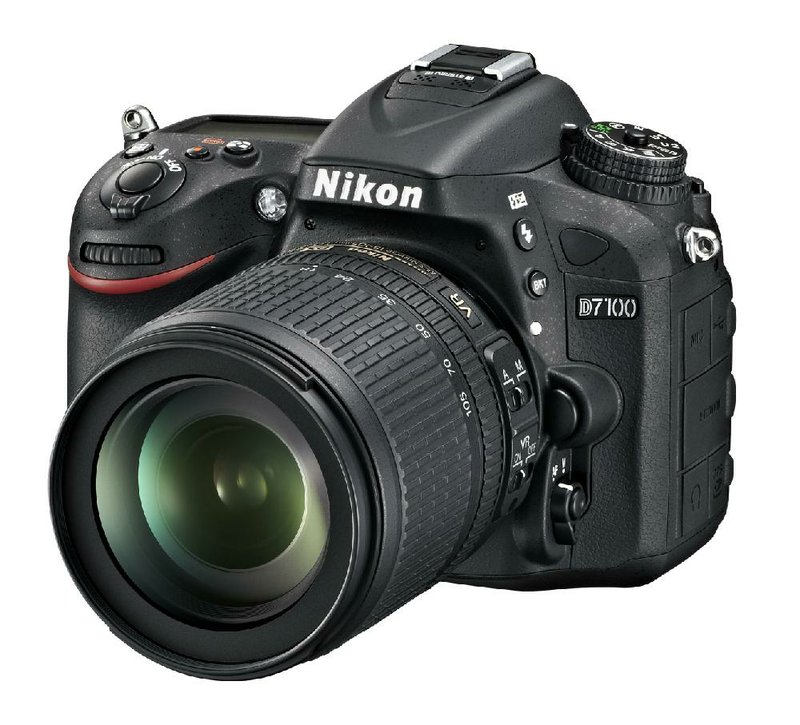New products often take time to learn, then to test. However, this week I had some familiarity with the product, which gave me more time to put it through the wringer.
I’ve spent the past few weeks testing the new Nikon D7100 digital SLR camera. This camera updates the Nikon D7000, a camera that received good reviews from writers and photographers alike when it debuted - giving the D7100 a high standard to meet. I’m very familiar with the D7000, so it didn’t take long to figure out the features of the D7100.
The D7100 is Nikon’s top-level DX, or crop frame, camera, as opposed to the professional-level full-frame cameras. Though the D7100is considered the top “consumer” camera, I have met professionals who have purchased the D7100 as well.
The D7100 has a movie mode, a large LCD screen on its back and Live View shooting, as well as scene and special effects built into the mode dial on top. A digital window on top shows the camera’s settings. Several buttons on the camera are programmable.
The camera is quite a bit larger and heavier than the D7000. It also has a larger sensor with 24.1 megapixels. It has a working ISO (film speed, to you old-schoolers) of 100-6400, expandable to 25600. It can shoot at up to six frames per second, and includes a quiet mode and wireless remote capabilities. The camera comes body only or in a kit with an 18-105 mm Nikkor lens. This lens is an excellent choice, providing nice wide-angle and zoom capabilities. It’s what you might call a great “walk-around” lens. The camera retains the dual card slots, which you can program to save photos in different formats or ways.
One of the big changes is with the mode dial at the top of the camera. It now has a lock button in the center, which must be pressed for the dial to move. This is a great addition because that dial tends to move very easily on the D7000.
The real changes are in the camera’s capabilities.
Color and sharpness are improved quite a bit, even over the D7000’s impressive standard. The color straight out of the camera is truer than before. Sharpness is improved as well, especially in high ISO settings. With many cameras, as the ISO becomes higher, the image becomes grainier and less sharp. The D7100 keeps the grain at a reasonable level, even at ISO 6400, making it able to nicely capture low light and action shots.
The D7100 greatly improves its compatibility with lenses. I’ve seen the D7000 have a few issues with certain lenses, causing them occasionally not to autofocus properly. I didn’t have that issue at all with the D7100. It handled several lenses without any problems, even those of brands other than Nikon’s Nikkor label.
I have one major gripe about the D7100: its wireless remote feature. The previous model, the D7000, had control for the remote on the mode dial. The D7100 puts that function in the menus and puts the quiet mode on the dial instead. I will say unequivocally that I absolutely hate this decision.
My passion is nature photography. Nature isn’t always on a timer, so sometimes you have to wait to get the right shot. Unfortunately, you can’t wait too long with the D7100, or the camera will go into standby (energy- saving) mode and shut off the remote-control feature. That means that after a few minutes, the remote won’t work, and you have to go back into the menu to turn it back on. This got very annoying very quickly.
You can go into the custom menus and reset the remote timer to shut off later, but the maximum time is 15 minutes of inactivity. Is that enough time? In most cases, yes, but not always. The other option is to turn off the standby mode for the camera, but that means the battery drains much faster. I really wish Nikon would put the remote back onto the dial and remove the time limit.
That’s my biggest complaint, and frankly, just about the only one. The camera produces gorgeous, incredibly sharp photos. The color is spot-on most of the time and it reacts incredibly well in low-light and high- action situations. I tested the camera in several situations, from macro shots to low -light, action and birthday party-shots.
To give you an idea of the camera’s capabilities, I’ve loaded a few sample shots on the Tech Spotlight Facebook page. You can view them at https://www.facebook.com/ pages/Tech-Spotlight-column/143770982301273. The photos haven’t been color or light corrected, though two were cropped slightly for closer views.
It’s nice to test a product that seems familiar from the start, but I’m always eager to learn. I’m interested in seeing what pops up next.
Melissa L. Jones can be reached via email at [email protected].
Where it’s @
The Nikon D7100 requires SD, SDHC or SDXC memory cards. The camera retails for $1,200 for the body only or $1,600 with the 18-105 mm VR Lens Kit. More information is available at nikonusa.com.
Business, Pages 19 on 07/29/2013

